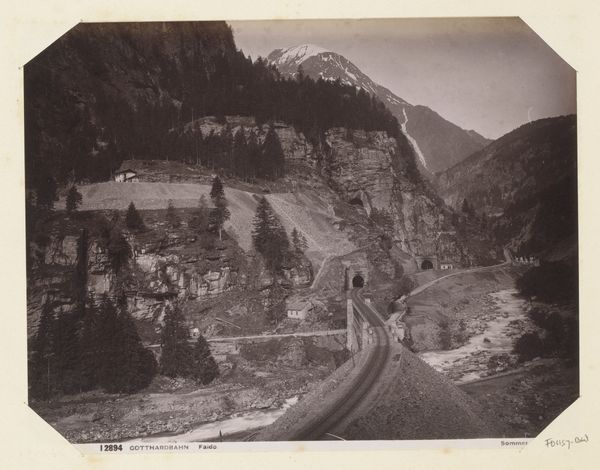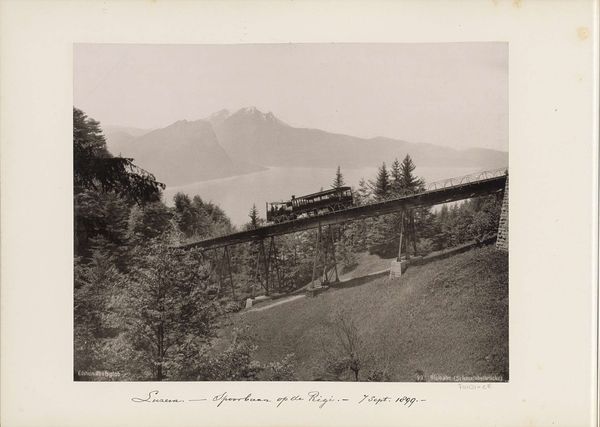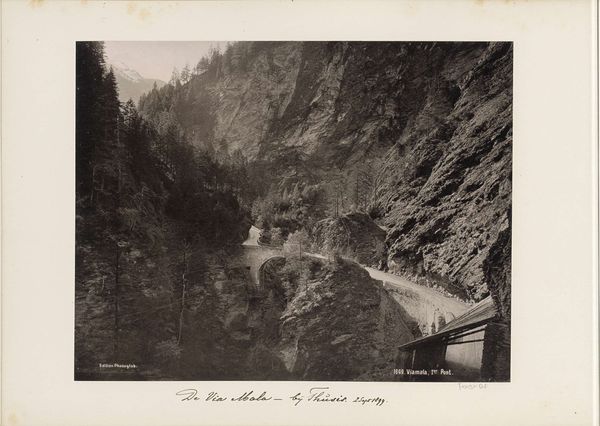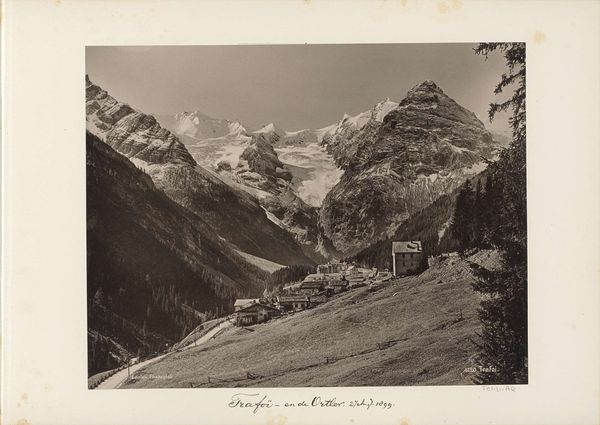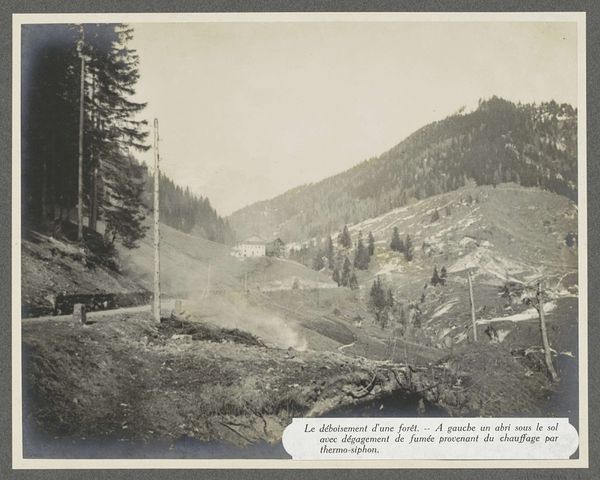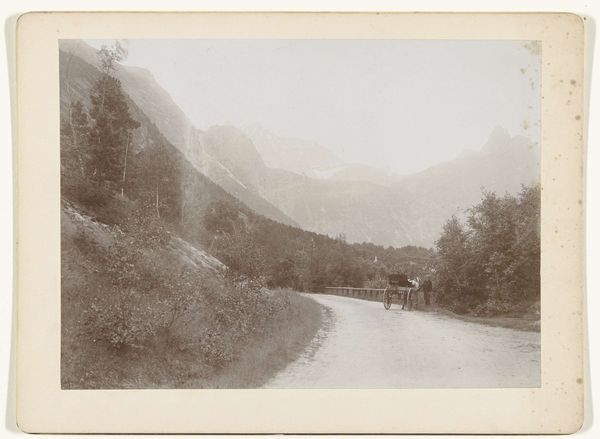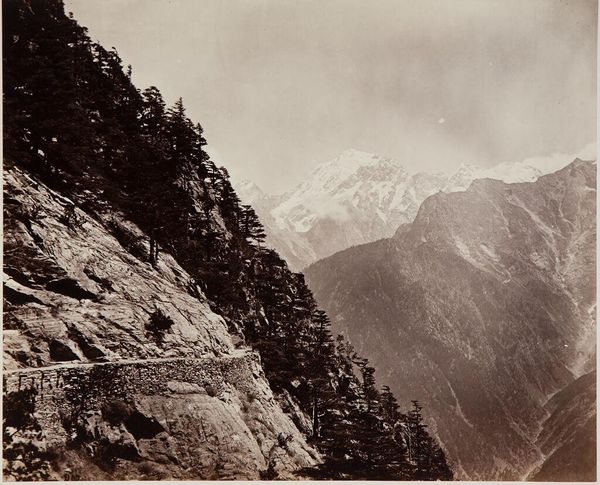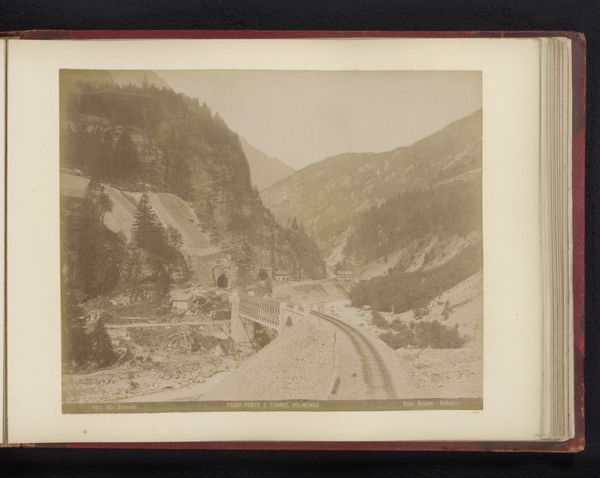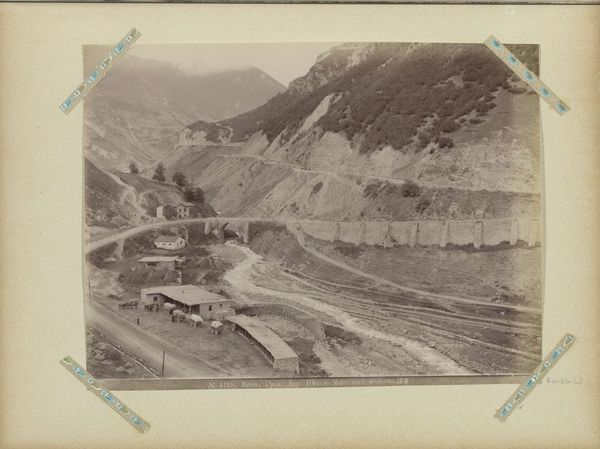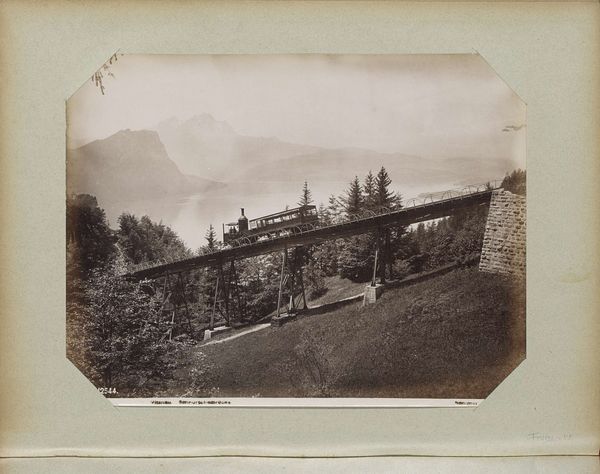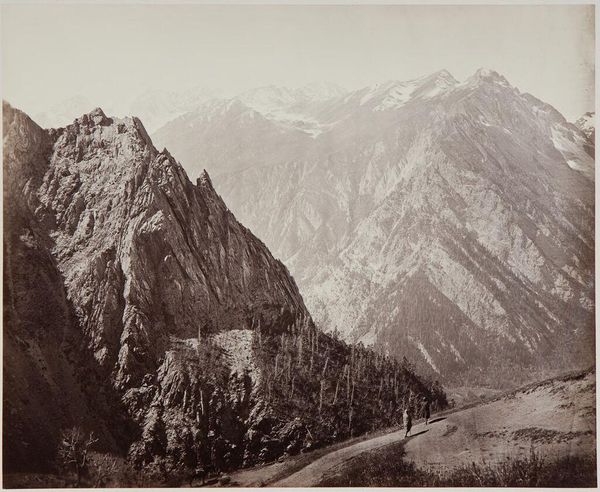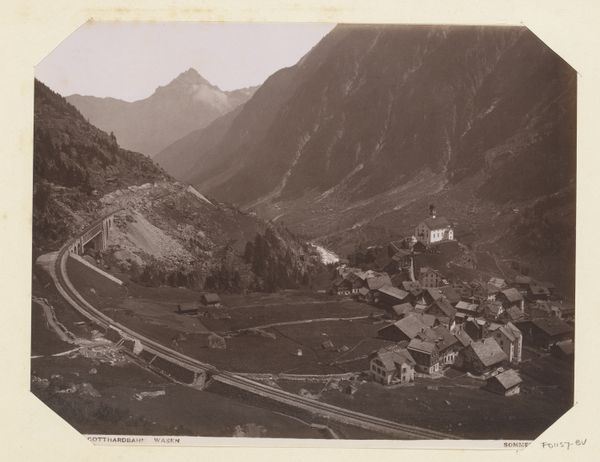
Reizigers bij een treinstel op de Brünigspoorweg tussen Passhöhe en Meiringen before 1899
0:00
0:00
photoglobco
Rijksmuseum
print, photography, gelatin-silver-print
# print
#
landscape
#
photography
#
gelatin-silver-print
#
realism
Dimensions: height 208 mm, width 270 mm
Copyright: Rijks Museum: Open Domain
Curator: This is a gelatin silver print from before 1899, attributed to Photoglob & Co., titled "Reizigers bij een treinstel op de Brünigspoorweg tussen Passhöhe en Meiringen," which translates to "Passengers on a train on the Brünig Railway between Passhöhe and Meiringen." The photograph resides in the Rijksmuseum collection. What’s your first impression? Editor: Stark beauty. The image really draws me in with its black-and-white realism—and then juxtaposes the natural wonder with a feat of engineering. It's like, look what humans have done cutting into the rock, while also framing snow-capped mountains as this kind of immovable background. I get a sense of tiny scale here, human effort against overwhelming nature. Curator: The process of producing an image like this back then interests me. A gelatin silver print involved coating paper with light-sensitive silver halides in gelatin, exposing it to a negative, and developing it. Think about the labor—mining the silver, manufacturing the chemicals, the photographer hauling equipment through mountain passes. Travel and tourism supported a demand for landscape images. Editor: It's all a stark contrast. I wonder what kind of work the people on the train were involved in. What they looked like to wear such formal looking outfits at that particular time? I'm intrigued. And a little bit unsettled too. It's cold, right? You feel the cold radiating. I'm sure if color was an element to it it could communicate warmer tones, more of that romanticized, European idea about travel at the time, versus what it may have actually been, or how you may have actually felt as a passenger riding upon it at the time. Curator: The development of railways also opened up resource extraction—timber, minerals. That required manual labor as well. This photography normalizes resource exploitation as scenic spectacle. Editor: Good point. Looking at the texture and considering the engineering involved—I'd guess it might have taken some time to smooth this, because from the distance, you only notice that initial grand effect of an industrious moment, of humanity or progress being created. It is about smoothing some kind of pathway forward and thinking about how long and laborious that type of process really could be, it gets the mind flowing for other more complex, current type projects too. Curator: Indeed, every romantic view obscures the labor inherent in its creation. Thanks for helping illuminate those relationships in this image, it adds another layer to appreciating it. Editor: Thanks. My mind is full of the romantic nature of train travel that's also combined with the dark history of those passengers inside. A bit bitter-sweet.
Comments
No comments
Be the first to comment and join the conversation on the ultimate creative platform.
